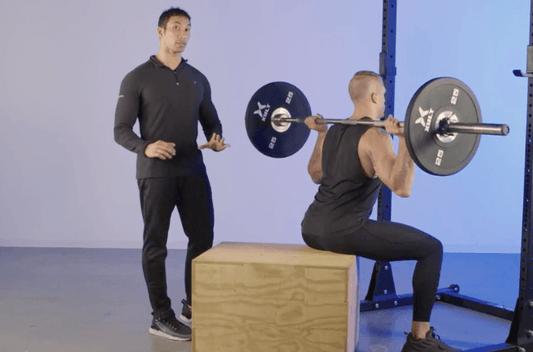

How Much Time Should You Rest Between Cardio and Weights?
Table of Contents
Cardio Between Weights: How much time is Needed?
by: Robbie Durand
There have been some serious strength training athletes that believe that if you are trying to get strong, then you should minimize cardio training. Some powerlifters believe in doing cardio three times a week on days that they are not training whereas others believe in not doing cardio at all. It has been shown that a 24 hours’ recovery between strength and endurance sequences leads to higher maximal strength improvements than when both exercises are performed during the same training bout. It’s pretty reasonable to conclude that if you do a maximal strength test 24 hours after a cardio session, but if you’re doing a cardio session less than 24 hours after a strength session, they may be some interference effect. Previous studies showed that strength training combined with endurance exercises in a single program is known to impair strength and power gains in comparison with strength training alone. The problem with strength training alone is that it does not give the optimal cardiovascular improvements compared with combined cardio and resistance exercise. Researchers wanted to examine how close a cardio session could be performed without it causing strength decrements. They wanted to find out the minimum amount of time needed to take off between weights and cardio.
Researchers studied whether the duration (0h, 6h or 24h) of recovery between strength and aerobic sequences influenced the responses to a concurrent training program.
Combined-Cardio Right After Weights (cardio after weights) – cardio training was done immediately after resistance training.
Combined-6 hours later (twice a day training) – strength in the AM, cardio training in the PM – 6 hours rest period or
Combined-24hours later – strength on day 1, cardio training on day 2 – 24 hours rest
Fifty-eight amateur rugby players were randomly assigned to either control, concurrent training (0h, 6hours or 24 hours) or strength training groups during a 7-week training period. Aerobic exercises included three 6-min sets of high intensity 15 s/15 s interval training on a field.
Strength training sessions consisted of 3-4 sets of 3-10 RM of the lower limbs (half squat and leg press) and upper arms (bench press).

At the end of the study, the gains in maximal strength for bench press and half squat were lower in Combined-0h (cardio after weights compared to Combined-6h (twice a day training), Combined-24-hours, and strength training alone. The maximal voluntary contraction during isokinetic knee extension at was higher for 24hour break compared with Combined-0h (cardio after weights). This study emphasized that the interference on strength development depends on the recovery delay between the two sequences. Daily training without a recovery period between sessions (Combined-0h (cardio after weights) and, to a lesser extent, training twice a day (C-6h), is not optimal for neuromuscular and aerobic improvements. Fitness coaches should avoid scheduling two contradictory qualities, with less than 6-hours recovery between them to obtain full adaptive responses to concurrent training. Moreover, a 24-hour recovery period seemed to be necessary for full aerobic development and to observe similar responses of the torque production capacity to those in the strength-only group.
Robineau J, Babault N, Piscione J, Lacome M, Bigard AX. The specific training effects of concurrent aerobic and strength exercises depends on recovery duration. J Strength Cond Res. 2014 Dec 24.
Bell, GJ, Syrotuik, D, Martin, TP, Burnham, R, Quinney, HA. Effect of concurrent strength and endurance training on skeletal muscle properties and hormone concentrations in humans. Eur J Appl Physiol. 81(5):418-27, 2000.
Chtara, M, Chamari, K, Chaouachi, M, Chaouachi, A, Koubaa, D, Feki, Y, Millet, GP, Amri, M. Effects of intra-session concurrent endurance and strength training sequence on aerobic performance and capacity. Br J Sports Med 39(8):555-60, 2005.
Chtara, M, Chaouachi, A, Levin, GT, Chaouachi, M, Chamari, K, Amri, M, Laursen, PB. Effect of concurrent endurance and circuit resistance training sequence on muscular strength and power development. J Strength Cond Res. 22(4):1037-45, 2008.
Dudley, GA, Djamil, R. Incompatibility of endurance- and strength-training modes of exercise. J Appl Physiol 59(5):1446-51, 1985.
Hennessy, LC, Watson, AWS. The interference effects of training for strength and endurance simultaneously. J Strength Cond Res 8:12–9, 1994.
Hickson, RC. Interference of strength development by simultaneously training for strength and endurance. Eur J Appl Physiol. 45:255-63, 1980.
Hortobagyi, T, Katch, FI, Lachance, PF. Effects of simultaneous training for strength and endurance on upper and lower body strength and running performance. J Sports Med Phys Fitness 31(1):20-30, 1991.
Lee, A, Craig, BW, Lucas, J, Pohlman, R, Stelling, H. The effect of endurance training, weight training and a combination of endurance and weight training upon the blood profile of young male subjects. J Appl Sport Sci Res 4(3):68-75, 1990.
MUSCLE MEDIA MAGAZINE FOR MEN
The premier source of training, nutrition, supplements, fat loss and health for men.

















